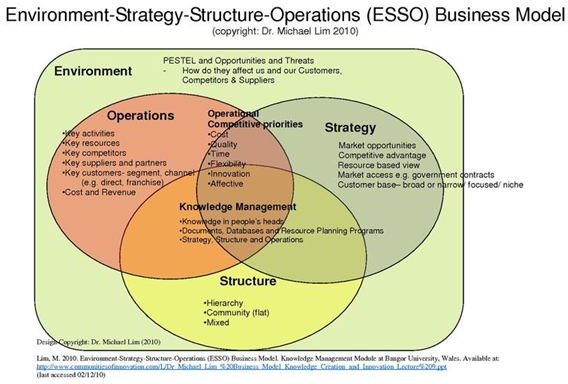Innovation Management - Controlling the Costs and Processes of Product Development Projects
Innovative vs. Creative
The first important step in understanding the disciplines involved in managing product development projects is to distinguish the concept of “innovation” from that of “creation”. To innovate is “to renew”; hence project plans are made for making changes to a product that already exists, in order to:
- lengthen the duration of the lifecycle,
- widen a coverage or extent of usability,
- minimize wastes and energy use,
- make it more affordable,
- make it more practicable,
- make it portable,
- make it more environmentally friendly,
- make it more user friendly,
- automate the functions,
- and a host of other possibilities that creative minds can imagine.
Creativity, therefore, is the means by which an innovation can transform a product and add value to its transformation. Innovative ideas abound, but not every change added to a product is regarded as creative, because not all changes bring significant values to the user.
Creativity is said to be more potent than innovation because it can change a system or spawn an entirely new concept from which further ideas can spring for improvement or enhancement. It could start from nothing except for an inspiring thought and be developed into something that is unique and be recognized as “the original”.
The computer, for one, is a classic example of creativity that changed a system, but the personal computer brought such creative changes to the concept of computerization that it practically changed man’s way of life. Anybody can make changes but not everyone has the ability to create changes that can add value in more ways than one.
Understanding the Need to Manage Innovation Projects

A business organization needs to control the entire processes involved in investing its funds and resources in order to develop a creative idea into a viable source of additional proifts. Otherwise, funds can be depleted at a faster rate because the undertaking may or may not generate the expected return on investments..
The development of creative ideas can be affected by new advancements in technologies or the possibility that competitors could come up with better or cheaper solutions. An unexpected event could stem from man-made causes or from natural disasters. These are conditions that can altogether alter the consumers’ buying perception and the investors’ willingness to risk their monetary resources. Moreover, a political turmoil, a collective resistance to change, or a federal regulation can instantly cause a downturn in market activities.
Optimizing the Sources of Creative Ideas
Eric Von Hippel, an economist and a professor of Engineering Systems Division at the Massachusetts Institute of Technology, introduced the idea of harnessing consumer knowledge as sources of creative innovations. To date, he is still actively involved in teaching the practicality of gaining insights from consumers and from open user communities. Most business entities heed his teachings, since they have proven that customers are the most realistic sources of ideas for making product improvements.
Comprehend that before resources are invested for launching full-fledged research and development initiatives, there is the need to carefully evaluate the soundness of a creative idea.and the lucrative feasibility of the developed product.

The Lead Users
Lead users can be anyone who can provide an expert opinion because they simply rely on the product as their main tool or ingredient, or they are simply dedicated to the study of its concept. They can be celebrities in their own fields giving feedback about their experiences regarding the product’s performance. They can also be medical professionals who have tested the product’s effectiveness or academicians who have made careful studies about the product’s economic value.
Their input is considered among veritable and highly-bankable sources of information for enhancing or improving a product. They stay on top of the latest trends and developments in the market, looking for products that could help them improve their craft, gain more followings, acquire more knowledge about the most recent breakthroughs for treating their patients, keeping their clients fit, or to analyze how it affects public health, moral values or the environment.

The Creative Consumers
Customers have unknowingly participated in research and development undertakings as they are provided with online tools that they can use to apply to their own ideas. There are the open sources, which they use as learning mediums. Much to the users’ delight, they are allowed to modify a program in ways that can best suit their purpose.
Other customers or online users are encouraged to use web applications called “create-your-own” to experience the delight of exploring their ideas via virtual presentations.
There are also the sites dedicated for a particular leisure, theme or genre, where members can share their techniques, experiments, or family traditions handed down from several generations. The sites also hold contests for product users, hobbyists, fans, aficionados, do-it-yourself advocates, and whoever wants to showcase their original ideas along with their videos or photos, with the likely prospect of winning a prize.
The participants are called the creative consumers, and they provide the inspirations for future innovations.
The Complaining Customers
Online forums where customers air their complaints, or even simply criticize the products for catering only to a select group of consumers, are quite useful as sources of creative ideas. In some cases, their negative feedback stems from using the product in ways that were not intended as part of the product’s uses, or because the customer went beyond the product’s threshold..
Negative opinions may stem from frustrations of not meeting their expectations. Such expectations could be considered as feasible but were not anticipated by the product designer. The idea of “plus-size” garments, for example, came from quite a number of women who were quite frustrated that their large measurements were confined to loose-fitting apparel.
Explore Shops that Offer Customized Services
Outlets that try to outdo each other can also provide insights on how a company can further improve its products. One of the most common selling points offered is product customization as a means to meet the client’s needs. Finding out about the most common and most requested specifications can be used as starting points for creative concepts.
Take Inspirations from Disruptive Innovations
The concept of disruptive innovation pertains to certain changes that are intended only to attract the consumer by way of presenting a cheaper alternative. Clayton M. Christensen, a professor at Harvard Business School, took notice of this type of changes made on consumer products and made a careful study of its significance and logic.
A product may be inferior in quality but the affordability of the price tends to attract the low-budgeted consumer, particularly if economic conditions are a prevalent influence. Accordingly, the airline’s economy class is an example of disruptive innovation; but Professor Christensen’s study also involved the use of disruptive innovation as a source of a business entity’s improvement ideas. Despite the numerous complaints over the economy class flight, customers still book their flight reservations early.
Other airlines have taken inspirations from the viability of economy flights, but they pay attention to customers’ complaints. So they came up with the concept of a “premium economy”, which bridges the gap between the standard economy and the business class. It’s about having a bit of luxury where it counts the most at an affordable price.
Nonetheless, these are merely staring points, and the best practices for innovations management embrace the entire procedures on what should be considered as having the most potential, the technologies available, the cost that would be added and the willingness of the targeted market to pay for the added value.
Points to Consider on Innovating a Product:
-
Plan to optimize the changes for reproducibility, where reproducibility means that the renewed product can be duplicated, copied or reproduced and will work just as well using relatively the same methods on a similar material. This may entail manufacturing the enhanced product using different conditions, equipment, laboratory or location. The primary purpose is to add value to the product at a price that the consumer is willing to pay: Experts maintain that economic logic often prevails over the technological attributes.
-
Ensure the readiness of a commercialization plan for the purpose of pushing through with the innovative idea ahead of the competitors. The plan refers to the licensing or patent rights, the funding for research and development, the availability of technological or biotechnological services or equipment, and other support needed to transform a creative idea into a financial success.
-
Establish the value propositions of the innovated product and make sure consumers understand the significance of the changes made on the product. Emphasize the additional benefits, the key differences between the latest improvement and what is currently available or offered by competitors, and provide the links to the customers’ needs.
Innovations management deals not only in managing the resources, coming up with creative concepts on how to make improvements, but also with the deployment processes for their research, development, optimization and commercialization.
Reference and Image Credit Section:
Reference:
- By Herrmann, Ned Creativity? Innovation? Are They Different? Do We Need Both? From FOCUS Volume 10-Number 3 May-June 1999 Copyright 2001 Northern Arizona University
- By Von Hippel, Eric The Sources of Innovation
- By: Wang, Jennifer How to understand your customers better than they understand themselves –December 15, 2010
- By Christensen, Clayton The World’s Leading Expert On Disruptive Innovation
Image Credits:
